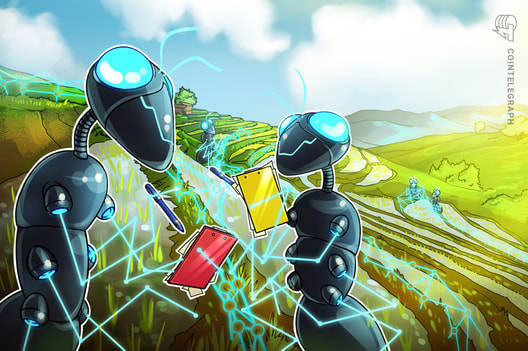In Italy, blockchain contributes over 2 billion turnover
Turnover of more than 2 billion eurosWith a positive increase of 31% over the 2021 ceiling: these are the data achieved in 2022Italian Agriculture 4.0Reported by the Milan Polytechnic Smart Agrifood Observatory and the Rise Laboratory of the University of Brescia.
In our country, Agricultural area processed with smart tools now reaches 8% of the total (+2% compared to 2021): In this scenario, the blockchain does not play a secondary role. The pressure for innovation from the production cost wave in the industry is playing in favor of the decentralized ledger; in fact, many companies have recently chosen to encourage testing of new digital technologies to limit negative impacts.
As explained in the Polytechnic document, currently major investments relate to the field of food traceability and product quality control.. But it’s not just him; the trend towards innovation is becoming more evident and expanding into diverse and differentiated use cases. As can be read in the observatory text:
“In Italy, 75% of digital solutions for food traceability are provided by innovative technologies, and 17% of these are offered by startups offering solutions based on blockchain technology.”
Blockchain numbers in the agri-food sector
Let’s get to the numbers. Overall, in the broader agri-food world, blockchain technology is finding an increasing foothold. This sector actually ranks third in the number of operational pilot cases. After finance and public administration, it concerns 7% of blockchain applications in Italy.
Also, as described by CREATE reports — Council on Agricultural Research and Agricultural Economic Analysis — we are in the testing phasefirst of all, due to the effective (sometimes insurmountable) difficulties encountered in the implementation of ordinary production systems. According to the analyzes Milan Polytechnic Blockchain & Distributed Ledger Observatory of Milan Polytechnic, in 2021 the number of agri-food projects using blockchain increased to 1242; however, of the 93 mapped use cases, 61% were announcements and 31% were pilots; but only 8% were actually operational applications.
from food safety to the certificate
However, its potential uses are many and efficient. Based primarily on the traceability and traceability of the products, they combine perfectly with a fairly wide range of tools and solutions that are already well established in the market: from traditional vertical software for the management of batches and expiration dates to more innovative technologies. Internet of Things, Cloud and Big Data Analytics.
Generally, a decentralized ledger allows each actor in the supply chain to record information about their activities so that it is immutable and visible to all other nodes in the network. Here is a concrete example: when combined with IoT technology, so-called “smart tags” will allow you to automatically identify and track goods, detecting hypothetical product changes (for example, in connection with storage temperatures or contamination of the surrounding environment). This plays an important role in maintaining food safety and product recall procedures.
In addition, the CREA document, Blockchain may be required in fraud prevention and certification processes. In fact, as stated in the report:
“Data collected and rendered immutable can be made available to validators who always have access to a copy of the distributed record. This simplifies the certification and renewal process for individual companies or the entire supply chain. In addition, the same certificates can be registered on the blockchain and associated with products to ensure they are traceable throughout the supply chain.”
An incentive for sustainability
Already in 2018How the information gathered by the Polytechnic Observatory was highlighted Blockchain was used for traceability and certificates in 86% of the analyzed agri-food application projects.. However, despite the fact that the document was prepared at a strictly pioneering stage, it was already clear how to do it. The technology was also useful in relation to the environmental and social sustainability of companies. (for example, in relation to the control of illegal recruitment practices or the guarantee of international standards or the maintenance of nature reserves).
Finally, the document highlighted how blockchain was perfect for tracking shipping and production stagessuch as temperature, humidity and light to which biological parameters or products are exposed at various stages of production. Consider, for example, the relevance all this may have for oil in international trade.
benefits for the consumer
One of the more interesting aspects of the benefits the distributed ledger brings to agriculture is, positive impact on the final consumer. as evidenced by CREA 2022 reportWhile technology is not considered a “communication” in the strict sense, companies in the industry can undoubtedly use their products to enhance their features and ultimately strengthen their ties with buyers.
Information collected along (or part of) the supply chain can be shared with the final consumer.As a result, they will be able to know and control the history, integrity and characteristics of the product, as well as analyze aspects in terms of environmental and social sustainability.
It’s still a long journey
Despite the numbers and positive assumptions, the increase in turnover and the wide range of applications, no shortage of critical issues. In fact, in its 2022 report, the Smart Agrifood Observatory concluded:
“Opportunities to develop still underused and known technologies seem limited, and just under 30% of companies say they plan to invest in new solutions over the next three years.”
Besides, 80% of companies are not currently considering investing in decentralized registryhaving already implemented one or more different digital solutions. Despite the numbers, there are many companies that prefer to look at the fair from the outside, carefully measuring the benefits before making new investments. However promising it may be, the journey is undoubtedly still long.

